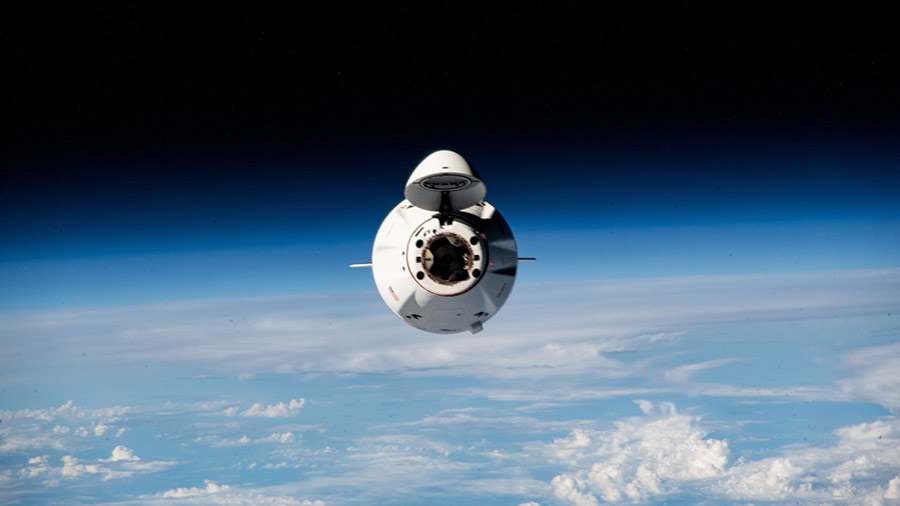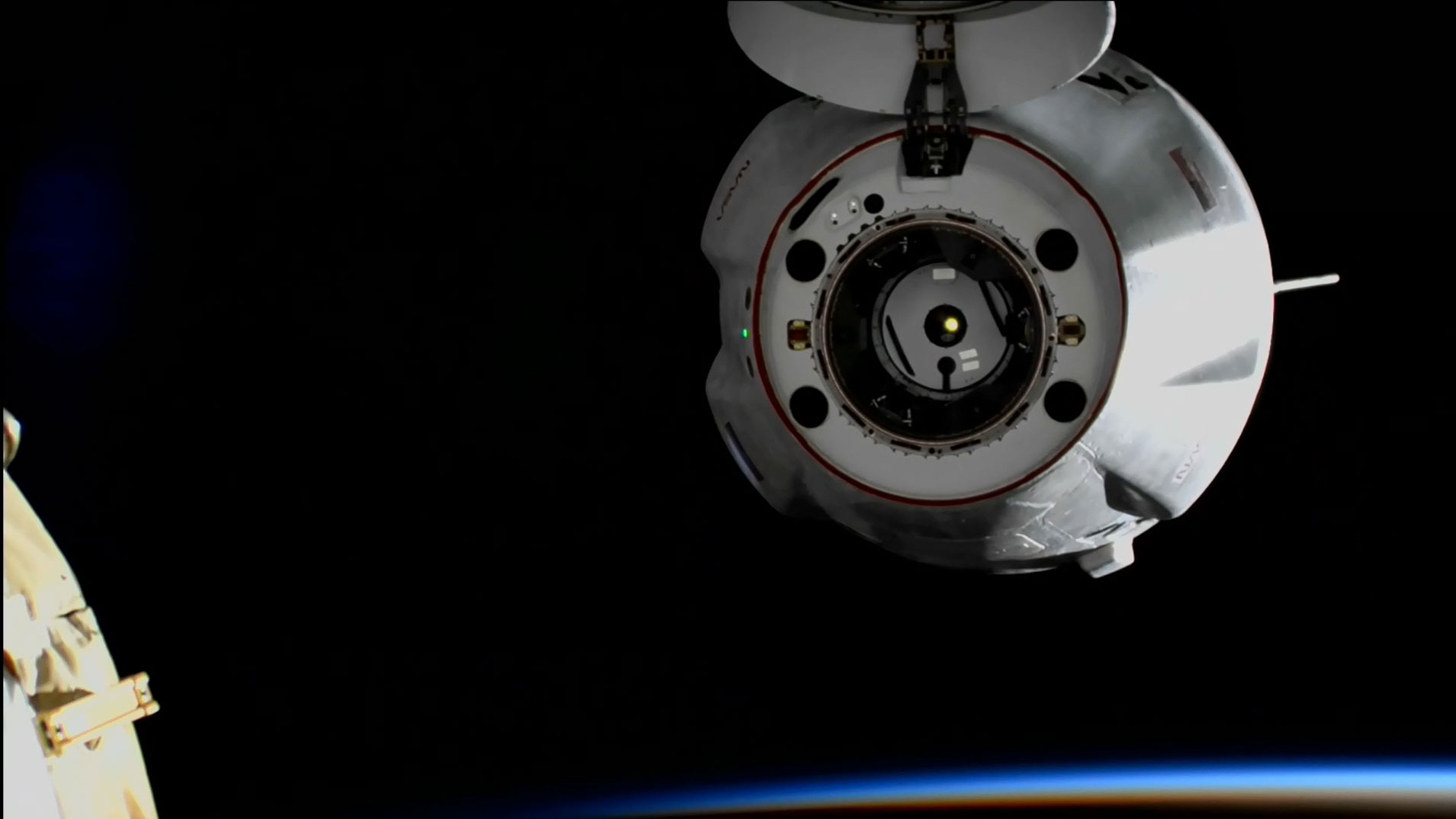
Two spaceships in two days have departed the International Space Station and the Expedition 70 crew will spend Christmas and New Year’s Day orbiting Earth.
NASA astronaut Loral O’Hara monitored the Canadarm2 robotic arm release of the Cygnus space freighter on Friday, Dec. 22. Earlier, ground engineers remotely maneuvered the Canadarm2 and detached Cygnus from the Unity module where it had been installed since Aug. 4.
Packed inside Cygnus, along with disposable cargo, is the SAFFIRE-VI experiment that will be remotely activated aboard the spacecraft to explore fire safety. The space freighter from Northrop Grumman will orbit Earth on its own until early January for a safe, but fiery demise above the south Pacific Ocean.
The SpaceX Dragon cargo spacecraft completed its cargo mission at 5:05 p.m. on Thursday when it automatically undocked from the Harmony module’s forward port. Dragon parachuted to splashdown off the coast of Florida on Dec. 22 returning station science and hardware for retrieval and analysis in laboratories on Earth.
Following Cygnus’ departure, O’Hara turned her attention to combustion research and replaced components for an experiment that is observing how fuel temperatures affect material flammability.
Astronauts Jasmin Moghbeli and Andreas Mogensen spent the first part of Friday on lab maintenance. Moghbeli from NASA serviced a U.S. spacesuit in the Quest airlock then swapped fiber optic samples inside the Microgravity Science Glovebox. Mogensen from ESA (European Space Agency) spent most of the day setting up ARED, the (Advanced Resistive Exercise device, for the ARED Kinematics study to improve workout programs for Earth and space. The duo met at the end of the day for eye exams using standard medical imaging gear found in an optometrist’s office on Earth.
Flight Engineer Satoshi Furukawa from JAXA (Japan Aerospace Exploration Agency) set up interactive studio gear inside the Kibo laboratory module in preparation for an event with Japanese audiences on Earth. In the afternoon, the two-time station resident inspected and photographed windows in the Kibo and Destiny lab modules for any contamination or damage.
Veteran cosmonaut Oleg Kononenko began his day with cardiac research attaching sensors to himself measuring his heart activity in weightlessness. Flight Engineer Konstantin Borisov assisted Kononenko with the cardiac study then joined him in the afternoon for checkouts of audio and antenna gear in the Zvezda service module. Flight Engineer Nikolai Chub replaced smoke detectors in the Poisk module then activated a 3D printing experiment.
The seven astronauts and cosmonauts representing Expedition 70 will spend the final week of 2023 continuing ongoing research and lab upkeep. The orbital septet will also relax, open gifts, share a meal, and call down to their families on Christmas and New Year’s Day. The astronauts sent their thoughts and well wishes while in orbit this holiday season. The next space station blog post is planned to publish on Jan. 2, 2024.
Learn more about station activities by following the space station blog, @space_station and @ISS_Research on X, as well as the ISS Facebook and ISS Instagram accounts.
Get weekly video highlights at: https://roundupreads.jsc.nasa.gov/videoupdate/
Get the latest from NASA delivered every week. Subscribe here: www.nasa.gov/subscribe









